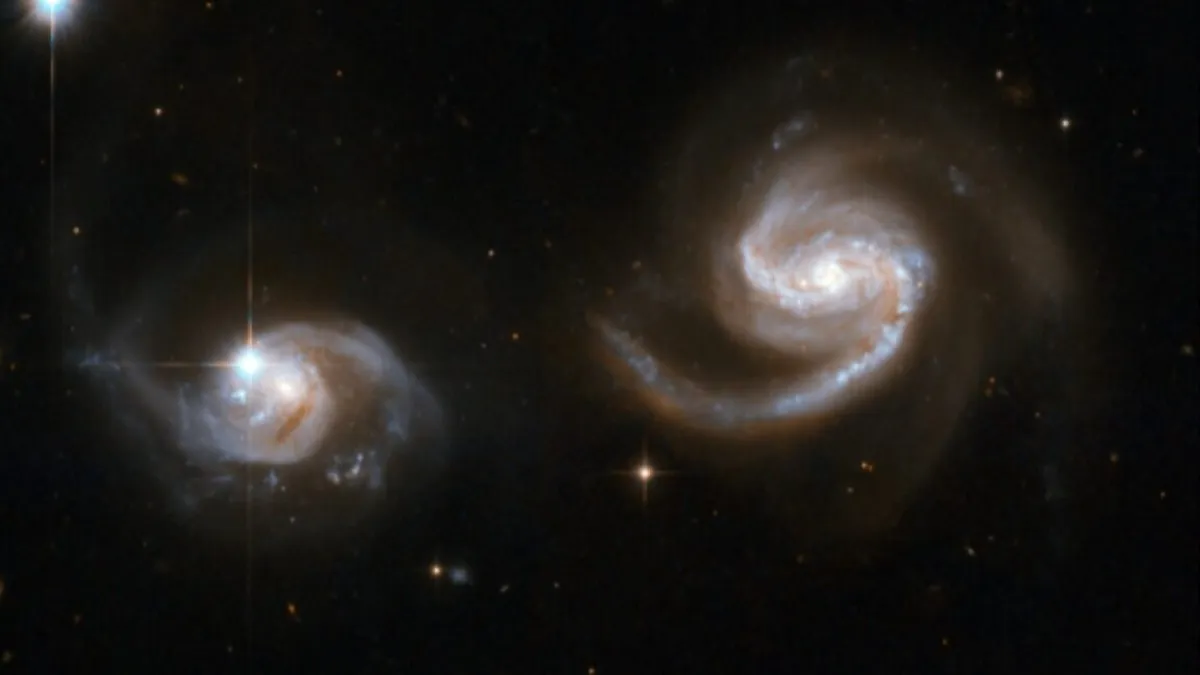
For over a century, it has been widely accepted in the scientific community that our Milky Way galaxy is on a collision course with the Andromeda galaxy, predicted to merge into a larger galaxy within the next 5 billion years. However, a groundbreaking study published in the journal Nature Astronomy challenges this long-standing belief, suggesting that the likelihood of such a collision may be less certain than previously thought.
The authors of the recent analysis propose that the probability of a collision between the Milky Way and Andromeda is akin to a coin flip, estimating a roughly 50 percent chance that the two galaxies will avoid merging over the next 10 billion years. Both galaxies are integral members of the Local Group (LG), which includes several smaller galaxies and dark matter, as defined by the prevailing cosmological model.
Understanding future mergers requires an in-depth analysis of the current coordinates, velocities, and masses of the galaxies involved. The study emphasizes that predicting these interactions involves not only the gravitational forces at play but also the effects of dynamical friction. This friction becomes significant as galaxies approach each other, affecting their orbital paths.
This innovative analysis utilized data from the Hubble Space Telescope and the European Space Agency's Gaia space telescope, conducting an impressive 100,000 Monte Carlo simulations. These simulations factored in the entire Local Group system, leading to a revised prediction that there is approximately a 50/50 chance of the Milky Way colliding with Andromeda within the next 10 billion years. Notably, there remains a 2 percent chance of a collision occurring within the next 4 to 5 billion years.
Two other galaxies within the Local Group, M33 (a satellite galaxy) and the Large Magellanic Cloud (LMC), play critical roles in this cosmic drama. The study found that the gravitational pull of M33 increases the likelihood of a collision. However, the LMC’s orbit runs perpendicularly to the Milky Way and Andromeda orbits, which could counteract this effect. Co-author Till Sawala, from the University of Helsinki in Finland, explained, “The extra mass of Andromeda’s satellite galaxy M33 pulls the Milky Way a little bit more towards it. However, the LMC pulls the Milky Way off the orbital plane and away from Andromeda. While this does not guarantee that the LMC will prevent the merger, it does make it slightly less likely.”
So, should we consider rewriting our textbooks on galactic collisions? Not just yet. The authors emphasize that further data and analysis are essential to confirm these new findings. Sawala noted the irony that despite the availability of more precise data from Hubble in recent years, there is now greater uncertainty surrounding the predicted outcome of a potential collision. “The complexity of our analysis and the complete system we considered have led to this uncertainty,” he stated. “The only way to refine predictions about the Milky Way’s fate is through even better data.”
In conclusion, while the future of the Milky Way remains uncertain, this latest research opens the door to a deeper understanding of our galaxy's trajectory and its potential interactions with neighbors like Andromeda. As science progresses, our grasp of the cosmos continues to evolve, reaffirming the importance of ongoing exploration and discovery.
For further reading, refer to the full article in Nature Astronomy, DOI: 10.1038/s41550-025-02563-1.